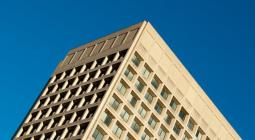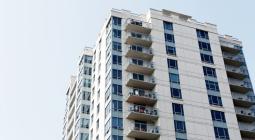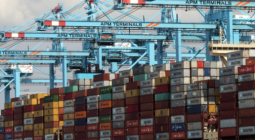Burkina Faso: A Model for Green Building in West Africa
Burkina Faso.’s commitment to sustainable development and environmental consciousness is exemplified through the presence of top-notch green buildings with innovative design and a harmonious blend with the natural landscape.
At the forefront of Burkina Faso’s green building scene is Diébédo Francis Kéré, a renowned architect gaining international recognition for his sustainable and community-centered approach to architecture.
Kéré’s designs are marked by the incorporation of local materials such as mud, clay, and wood, resulting in environmentally friendly buildings that seamlessly integrate with their surroundings. These structures not only reduce ecological footprints but also address the challenges posed by the region’s extreme heat. Kéré, notably, became the first African recipient of the prestigious Pritzker Architecture Prize. His innovative designs serve as a model for sustainable architecture in West Africa, highlighting the benefits of using traditional materials to create high-quality and affordable buildings.
Lycée Schorge Secondary School: A Showcase of Tradition and Innovation
Located on the outskirts of Koudougou, the Lycée Schorge Secondary School is a prime example of what happens when traditional techniques and new materials are skillfully combined. The school comprises nine modules arranged around a central courtyard, providing protection from wind and dust. Each module is constructed from locally sourced laterite, cut into bricks and left in the sun to harden.
These bricks absorb heat during the day and radiate it at night, showcasing an ingenious use of natural resources.
A secondary façade made of local eucalyptus wood wraps around the classrooms, creating shaded spaces that shield students from extreme daytime temperatures.
Designed by Kéré Architecture, a Berlin-based, Burkinabè founded architecture firm, the school exemplifies how African countries are leveraging traditional building techniques to reduce the carbon footprint of their structures.
Sustainable Building Initiatives in Burkina Faso
Burkina Faso has embraced various sustainable building initiatives, contributing to environmentally-friendly design practices. The International Festival of Earthen Architecture, for instance, celebrates sustainable building techniques and promotes the use of natural materials in construction.
Another noteworthy initiative is the Green Building Council of Burkina Faso. This organization actively promotes sustainable construction practices, offering education and training for builders and architects.
The council certifies green buildings, recognizing those who incorporate sustainable design practices into their projects.
Developers, AVN also disseminated a low-carbon, energy-efficient building alternative in Burkina Faso, the Nubian Vault (NV).
Its innovative market-based program seeks to address housing issues while creating additional income opportunities for rural smallholder households and enhance local economic development.
Using only raw earth, a locally available material, the NV technique allows the construction of sturdy, weather-resistant, low-carbon and energy-efficient buildings, embedded in local economies and traditions, for wide-scale access to decent and long-lasting homes, wellbeing and social empowerment of present and future generations.
AVN is a non-profit social and green entrepreneur, with an integrated program answering multiple issues:
Benefits of Sustainable Buildings in Burkina Faso
- Climate Resilience: Burkina Faso’s sustainable buildings are designed to withstand the challenges posed by the region’s climate, offering climate-resilient solutions.
- Energy Efficiency: The integration of local materials and innovative designs reduces the need for energy-intensive solutions, contributing to overall energy efficiency.
- Reduced Carbon Footprint: Sustainable building practices, such as those championed by Kéré and other initiatives, contribute to a significant reduction in carbon emissions, addressing environmental concerns.
- Community-Centered Design: The focus on community needs and local materials ensures that these structures benefit the people they serve, fostering a sense of inclusivity.
- Long-term Economic Viability: The use of affordable, locally sourced materials and sustainable practices results in high-quality, cost-effective buildings that stand the test of time.
Burkina Faso’s commitment to sustainable architecture, as showcased by the work of Diébédo Francis Kéré and various initiatives, not only sets an example for West Africa but also emphasizes the global importance of incorporating eco-friendly practices in the construction industry.
With a growing awareness of the benefits of sustainable buildings, Burkina Faso is paving the way for a greener, more environmentally conscious future.
Cover photo: Architect Diébédo Francis Kéré: A Pioneer in Sustainable Design





